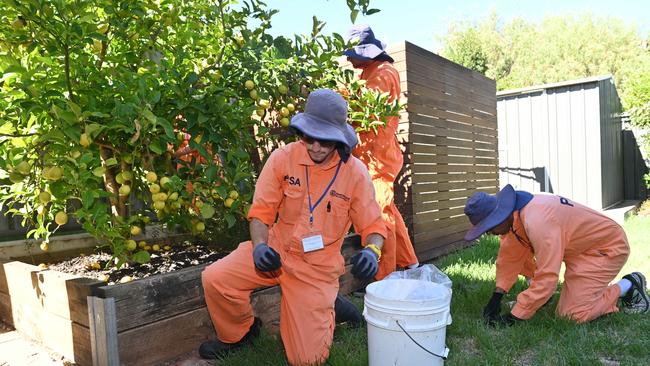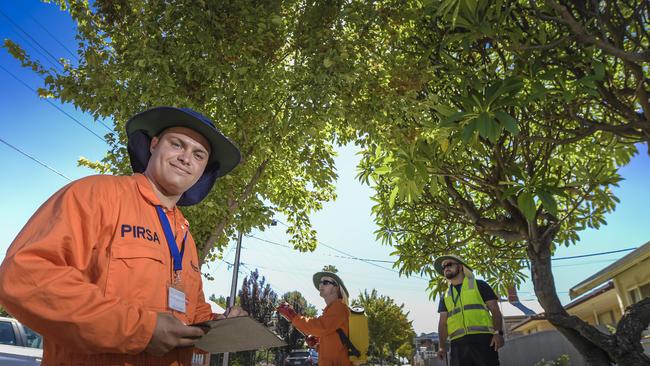Fruit fly cases surge in Prospect and Stepney, residents urged to strip trees
Hundreds of PIRSA staff have descended on homes in Prospect and Stepney to help residents strip fruit off trees and combat a spike in fruit fly.
SA News
Don't miss out on the headlines from SA News. Followed categories will be added to My News.
The State Government has refused to detail how many fruit fly detections in hotspot areas of Prospect and Stepney prompted the latest emergency response to strip ripe fruit from the trees.
Primary Industries and Regional Development Minister David Basham said his department leapt into action after a “significant” increase in the number of fruit fly detections “in the last week or so”.
“It’s very important to understand that there are some sensitivities around those numbers, with our international markets,” he said.
“So, the numbers are important to put in perspective with those jumps. And we’ve reacted to those jumps. They’re definitely not up at the hundreds level but certainly, a significant jump from the norm.”

Hundreds of PIRSA staff wearing orange overalls were diverted to the two hotspot suburbs on Thursday, working from the early hours of the morning to avoid the heat.
Around 1500 properties were targeted as part of the emergency response to remove ripe fruit and vegetables at risk of hosting fruit fly from residents yards.
Staff were doorknocking and offering to help residents pick fruit on the spot as well as baiting, which involves spraying with a substance that attracts fruit flies and kills them. It is still safe to eat produce that has been sprayed, although it’s always wise to wash it first. The spray is also harmless to pets and other animals.
Unwanted fruit must be placed in the green bin and not left on the ground to rot or turn into compost.
Mr Basham said he wanted to protect the $1.3 billion horticulture industry, which represents 37,500 jobs and around 4000 businesses, and maintain fruit fly free status.
“I’m very confident in the staff at PIRSA that they will do everything they can to get this under control,” he said. “It is a challenging time with the number of outbreaks or detections that we’re seeing.
“So I will be optimistic to say that we’ll see some positive news coming forward. But we also have to be realistic, that this may not be an immediate fix.”

People who were not home were left letters with information about the emergency operation and how to contact PIRSA staff to arrange access to properties.
“We cannot let this pest take hold – we have to get the fruit before the fruit fly does,” Mr Basham said.
There are nine active outbreaks of Mediterranean fruit fly and one Queensland fruit fly outbreak across metropolitan Adelaide.
Crews are also battling three Queensland fruit fly outbreaks in the Riverland.
Tough restrictions on the movement of fruit will remain in place until May 5, in an effort to protect SA’s $1.3bn horticulture industry.
This includes a ban on fruit in school lunch boxes for people who live in outbreak areas.
PIRSA has divided suburbs into three colours: red, yellow and green.
People living in red areas are unable to take fruit away from their property after it has been purchased from a shop or picked from the garden.
A detailed map of outbreak areas and quarantine zones is available on the PIRSA website.
Mr Basham said the public had been “extremely helpful” in the fight against fruit fly.
“We are asking everyone who is contacted to give these authorised (PIRSA) staff access to your garden so they can complete their work and remove at-risk produce,” he said.
Honeydew, rockmelon, watermelon and pineapple are not at risk to fruit fly and can be moved freely, as well as dried, frozen, canned or processed fruits.




